Yokai (Yōkai): Mysterious Interdimensional Force With Odd Abilities In Japanese Mythology
A. Sutherland - AncientPages. com - There is a mysterious force that in Japan is known as Yokai (“Yōkai”).
According to ancient Japanese beliefs, Yōkai (in Chinese: 'kanji', which means “strangeness, mystery, or suspicion”) are weird creatures that dwell in the borderlands and in spaces, which are located “in-between”.
The Ground Spider , October 1892. From the Thirty-six Ghosts series. 9.25" x 14.25". The print depicts Minamoto no Yorimitsu attacking a ground spider monster. Image credit: Tsukioka Yoshitoshi - Art Gallery NSW - Public Domain
The belief in Yōkai was mentioned in “Shoku Nihongi” text dated to the eighth-century and still, this ancient belief is alive in the Japanese modern society.
Yokai can take many different forms and are mostly associated with villages, old abandoned towns, deserted mountain passes.
Yōkai does not belong to anybody. They just exist, appear usually at twilight, when our surroundings look strange and are difficult to recognize. They haunt bridges and tunnels, entranceways, and lurk and disturb at crossroads and thresholds; they are elsewhere, changing their forms and places.
Research suggests that this creature dwells in the contact zone between fact and fiction, between belief and doubt. Yōkai is the common name for monsters, transformed humans and animals, demons, spirits, or goblin.
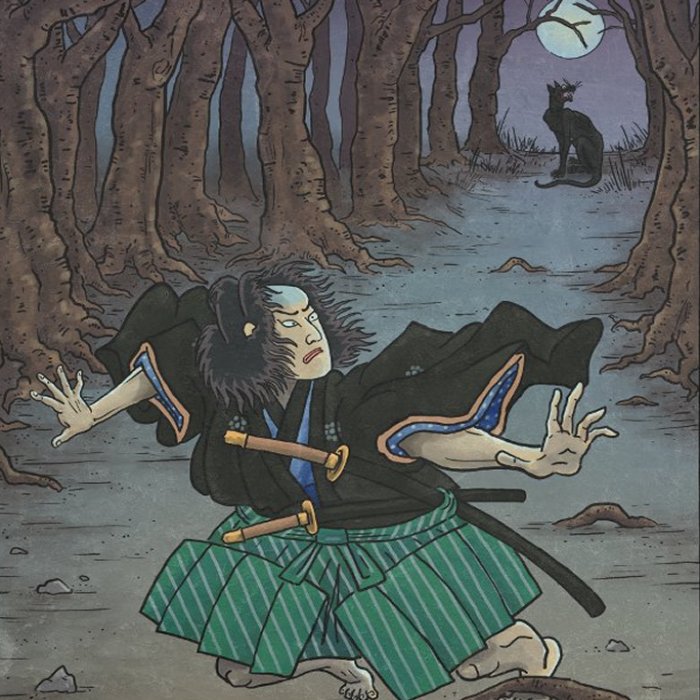
They haunt bridges and tunnels, entranceways, and lurk and disturb at crossroads and thresholds; they are elsewhere, changing their forms and places. Image credit: Mathew Meyers Yokai.com
People say they are simply monsters. Their nature varies from benign to mischievous to seriously scary.
In his book "The Book of Yokai: Mysterious Creatures of Japanese Folklore", which is based on his long study of Yokai, M.D. Foster, mentions an intriguing and unpleasant story from "A Collection of Tales from Uji, c. 1220" -m (Uji shūi monogatari).
This story tells of "a monk traveling alone through the province of Settsu, located in the vicinity of the present-day city of Osaka.
Coming upon a deserted temple, he decides to settle in for the night and begins chanting an incantation to the guardian deity Fudō, who battles evil with his immovable faith and compassion.
But suddenly, “a crowd some hundred strong came surging into the temple, every one of them with a torch in his hand.
When they got close, he saw that they were fantastically weird creatures, not men at all; there were all sorts of them, some with only one eye, some with horns, while their heads were more terrible than words can describe.”
The monk spends a terrifying night, surviving only because Fudō protects him. After the gang of oni finally leaves and the sun rises, the monk is shocked to discover that there is actually no temple at all and he cannot even find the path that brought him there.
Eventually, he meets some travelers who inform him that he is in the province of Hizen— hundreds of miles from Settsu!"
It is worth mentioning that "oni" is a term usually associated with danger and fear; this term is generally translated today as “demon” or “ogre.”
During the Heian period, "oni" meant a nasty and threatening creature, that frequently appeared in human-like form. "Oni" has enormous evil power and when engaged in the fight, these terrible creatures can reattach body parts they lose in fights.
They crush the enemy with one blow from their spiked iron club (kanabo; they can also fly, change form at will and cause diseases, insanity, and death. Their favorite food is human flesh.
Were these terrible "oni" creatures responsible for teleportation of the monk to another, very distant location? What did really happen to him?
Written by – A. Sutherland AncientPages.com Staff Writer
Copyright © AncientPages.com All rights reserved. This material may not be published, broadcast, rewritten or redistributed in whole or part without the express written permission of AncientPages.com
Expand for referencesReferences:
Foster, M. D. The Book of Yokai: Mysterious Creatures of Japanese
More From Ancient Pages
-
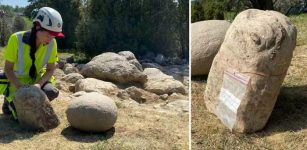 Unusual Discovery Of A Viking Age Phallic Stone In Tystberga, Sweden
Archaeology | Jun 12, 2023
Unusual Discovery Of A Viking Age Phallic Stone In Tystberga, Sweden
Archaeology | Jun 12, 2023 -
 Unlocking The Secrets Of Lost Prehistoric Land Hidden Beneath The Sea
News | Sep 8, 2015
Unlocking The Secrets Of Lost Prehistoric Land Hidden Beneath The Sea
News | Sep 8, 2015 -
 Ancient City Of Adab That Flourished In North Sumer
Civilizations | Jul 19, 2017
Ancient City Of Adab That Flourished In North Sumer
Civilizations | Jul 19, 2017 -
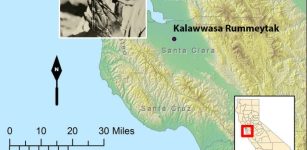 In Ancient California Matriarchal Society, Daughters Breastfed Longer And Women Accumulated Greater Wealth
Archaeology | Jul 13, 2023
In Ancient California Matriarchal Society, Daughters Breastfed Longer And Women Accumulated Greater Wealth
Archaeology | Jul 13, 2023 -
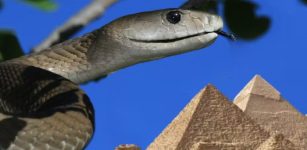 Brooklyn Papyrus Reveals Ancient Egypt Had Far More Venomous Snakes Than The Country Today
Featured Stories | Oct 24, 2023
Brooklyn Papyrus Reveals Ancient Egypt Had Far More Venomous Snakes Than The Country Today
Featured Stories | Oct 24, 2023 -
 Hayk – Legendary Patriarch And Founder Of Armenia Who Defeated King Bel Of Babylon
Featured Stories | Feb 10, 2022
Hayk – Legendary Patriarch And Founder Of Armenia Who Defeated King Bel Of Babylon
Featured Stories | Feb 10, 2022 -
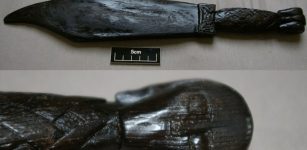 1,000-Year-Old Viking Weaver’s Sword Reveals Its Secrets
Archaeology | Apr 17, 2022
1,000-Year-Old Viking Weaver’s Sword Reveals Its Secrets
Archaeology | Apr 17, 2022 -
 Irish God Ogma – Outstanding Warrior And Inventor Of The Ogham Script
Myths & Legends | Jul 3, 2024
Irish God Ogma – Outstanding Warrior And Inventor Of The Ogham Script
Myths & Legends | Jul 3, 2024 -
 On This Day In History: Battle Of Rudau Was Fought – On Feb 17, 1370
News | Feb 17, 2017
On This Day In History: Battle Of Rudau Was Fought – On Feb 17, 1370
News | Feb 17, 2017 -
 Old Bone Links Lost American Parrot To Ancient Indigenous Bird Trade
Archaeology | Nov 8, 2022
Old Bone Links Lost American Parrot To Ancient Indigenous Bird Trade
Archaeology | Nov 8, 2022 -
 Celtic Valhalla And Sacred Wells – Magic Of Invisible Worlds
Celtic Mythology | Nov 17, 2021
Celtic Valhalla And Sacred Wells – Magic Of Invisible Worlds
Celtic Mythology | Nov 17, 2021 -
 Sacred Number Six And Its Symbolic Significance In Ancient Cultures
Ancient Symbols | Dec 27, 2017
Sacred Number Six And Its Symbolic Significance In Ancient Cultures
Ancient Symbols | Dec 27, 2017 -
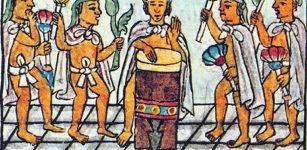 Daily Life Of Télpochcalli Students Of The Aztec Empire Was A Challenge
Ancient History Facts | Apr 20, 2020
Daily Life Of Télpochcalli Students Of The Aztec Empire Was A Challenge
Ancient History Facts | Apr 20, 2020 -
 Prehistoric Anomaly On The Tennessee-North Carolina Border Baffles Scientists
Featured Stories | Jul 30, 2024
Prehistoric Anomaly On The Tennessee-North Carolina Border Baffles Scientists
Featured Stories | Jul 30, 2024 -
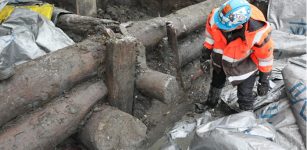 Why Did Archaeologists Destroy Medieval King’s Wharf After Excavations?
Archaeology | May 17, 2023
Why Did Archaeologists Destroy Medieval King’s Wharf After Excavations?
Archaeology | May 17, 2023 -
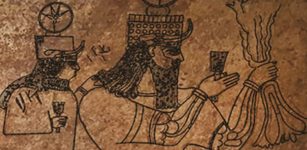 Unexpected Discovery Of Secret Underground Chamber Reveals Mysterious Neo-Assyrian Rock Panel
Archaeology | May 13, 2022
Unexpected Discovery Of Secret Underground Chamber Reveals Mysterious Neo-Assyrian Rock Panel
Archaeology | May 13, 2022 -
 Rare Ancient Clothes And Shoes Found Under The Ice At The Lost Lendbreen Mountain Pass
Featured Stories | Feb 9, 2023
Rare Ancient Clothes And Shoes Found Under The Ice At The Lost Lendbreen Mountain Pass
Featured Stories | Feb 9, 2023 -
 Early Humans In Europe Were Making Fires At Least 250,000 Years Ago – New Study
Archaeology | May 18, 2023
Early Humans In Europe Were Making Fires At Least 250,000 Years Ago – New Study
Archaeology | May 18, 2023 -
 Evidence Of An Unknown Neolithic Society At Oued Beht In North Africa Discovered
Archaeology | Sep 30, 2024
Evidence Of An Unknown Neolithic Society At Oued Beht In North Africa Discovered
Archaeology | Sep 30, 2024 -
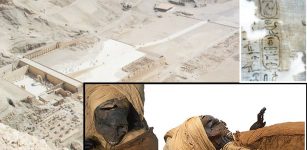 King Seqenenre Taa II Was Killed By Hyksos Invaders – Mummy Scans Reveal His Wounds
Archaeology | Feb 17, 2021
King Seqenenre Taa II Was Killed By Hyksos Invaders – Mummy Scans Reveal His Wounds
Archaeology | Feb 17, 2021


